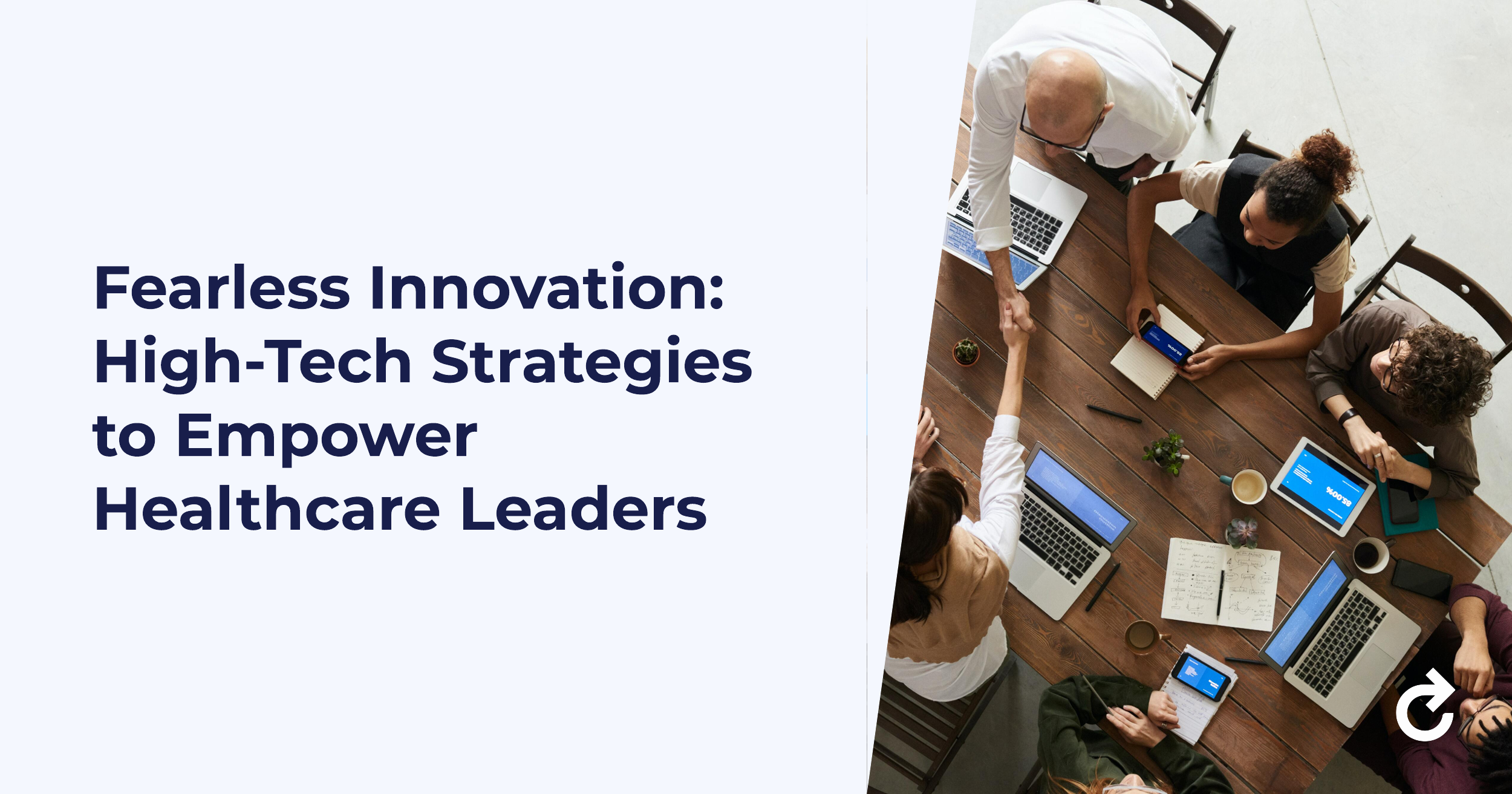In an ever-evolving world, the healthcare industry faces constant challenges that demand innovative solutions. Fearless innovation in healthcare is about embracing change, exploring new possibilities, and harnessing high-tech strategies to empower healthcare leaders. This blog will delve into the concept of fearless innovation, its relevance in healthcare, and the importance of adopting a “don’t hold back mentality” for successful collaboration.
Understanding Fearless Innovation in Healthcare
Fearless innovation in healthcare involves breaking free from conventional thinking and being open to transformative ideas that can revolutionize patient care, operational efficiency, and overall industry standards. It is about taking risks and exploring uncharted territories to pave the way for advancements in medicine, technology, and patient outcomes.
In the rapidly evolving healthcare landscape, fearless innovation becomes critical for success. Whether streamlining administrative processes, embracing emerging technologies like artificial intelligence and data analytics, or implementing telemedicine solutions, healthcare leaders must be willing to challenge the status quo.
Fearless innovation enables the development of cutting-edge technologies, treatments, delivery systems, and organizational efficiencies, which can potentially transform patients’ and professionals’ lives. It fosters a culture of continuous improvement and adaptation to meet the ever-changing challenges faced by the healthcare industry. Through daring to think differently, healthcare pioneers can unravel new opportunities to pave the way for the future.
Fearless Conversations
To foster fearless innovation, healthcare leaders must create an environment encouraging fearless conversations. This means establishing a culture where diverse perspectives are welcomed and team members feel empowered to voice their ideas and concerns without fear of judgment or retribution.
By fostering a culture of open dialogue, healthcare organizations can harness the collective intelligence of their workforce. Innovative discussions can lead to breakthroughs, improved problem-solving, and reshaping healthcare institutions’ operations.
In addition to an open environment, vulnerability is another critical element of fearless conversations. Embracing vulnerability is a crucial aspect that facilitates meaningful connections and effective problem-solving. The vulnerability allows healthcare professionals to admit their limitations and acknowledge areas needing guidance. Being open about challenges or uncertainties creates an atmosphere of trust, which is crucial when working and collaborating to find the best solutions for their specific needs. On the other hand, vendors can also embrace vulnerability by being transparent about the capabilities and limitations of their products or services, ensuring all have a realistic understanding of what to expect.
Fearless conversations and vulnerability help to break down barriers and promote a sense of partnership and shared purpose. It encourages both parties to learn from each other’s expertise and experiences, leading to refined solutions that benefit the organization.
In an industry where the stakes are high and patient well-being is at the forefront, fearless conversations driven by vulnerability can lead to meaningful advancements. It enables organizations and vendors to partner for solutions that align with the realities of the ever-changing healthcare landscape, ensuring innovation serves a purpose and positively impacts patient outcomes. The healthcare vendor space can drive transformative change by fostering a culture of fearless conversations and embracing vulnerability.
Building Strategic Alliances
Healthcare leaders must forge strategic alliances with internal stakeholders and external vendors to drive fearless innovation. Collaborative partnerships enable healthcare organizations to leverage expertise from various domains and integrate high-tech solutions seamlessly.
Working closely with other healthcare institutions, research organizations, and technology vendors can provide access to cutting-edge technologies, data-driven insights, and best practices. Such alliances can also result in joint research and development efforts, allowing healthcare leaders to push the boundaries of what is possible in patient care. Building strategic partnerships is not just about networking; it requires cultivating long-term relationships based on trust, shared vision, and a commitment to driving progress together.
Conclusion & Key Takeaways
Fearless innovation is a driving force that can revolutionize healthcare. Embracing a “Don’t hold back mentality” and fostering open, fearless conversations can lead to groundbreaking advancements. Building strategic alliances with stakeholders and technology vendors expands horizons and accelerates progress.
To thrive in the fast-paced world of healthcare, fearless innovation is not an option; it is a necessity. By staying open to change and empowering healthcare leaders with high-tech strategies, the industry can push boundaries and create a brighter and healthier future for all. Let us embrace fearless innovation to transform healthcare and positively impact people’s lives.
Please click here to watch our latest webinar in partnership with ASHHRA.

